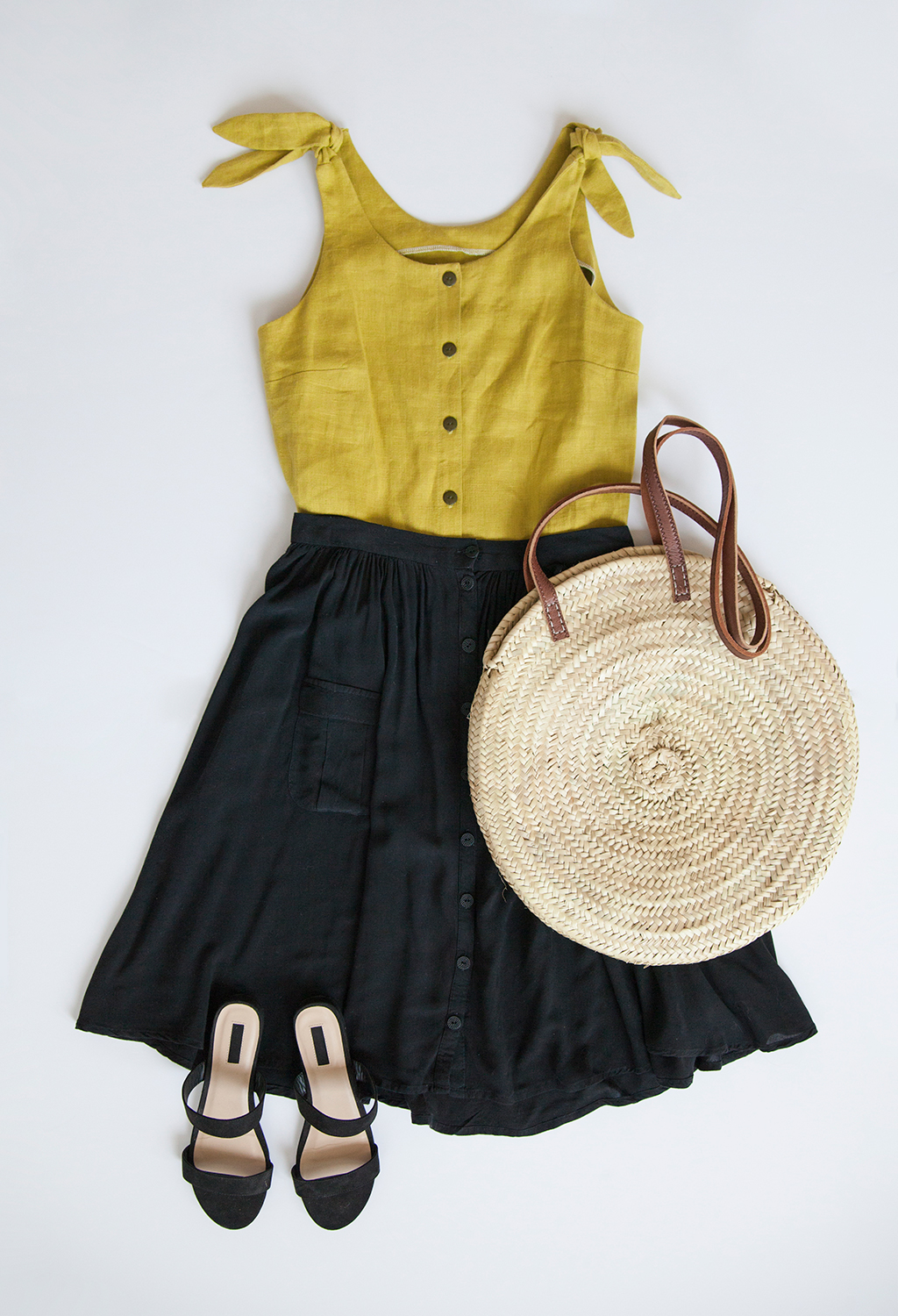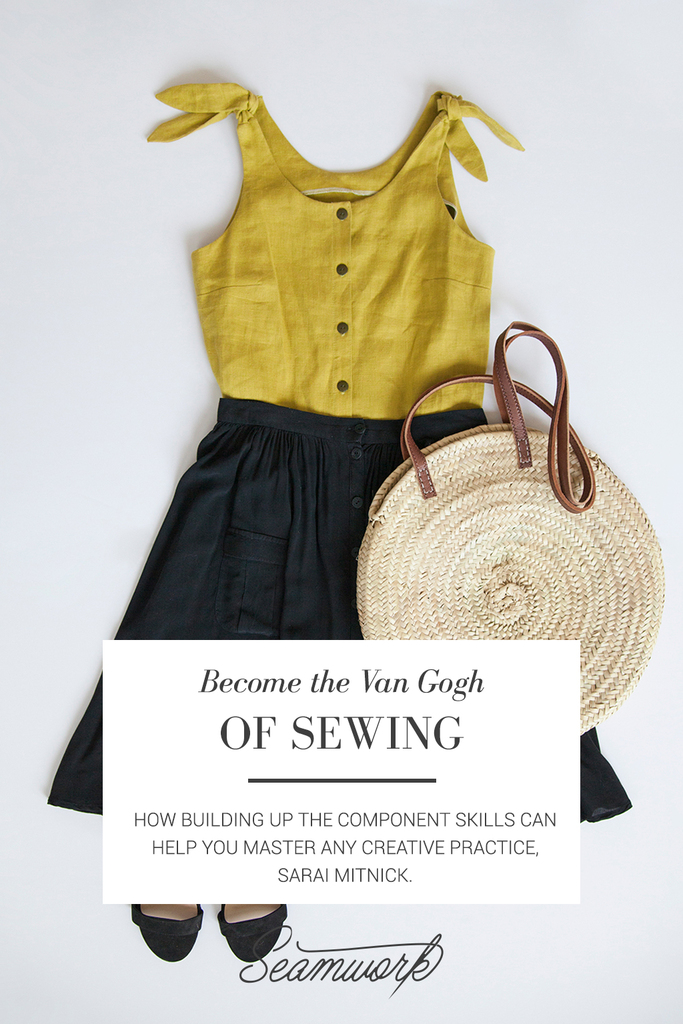How do you become competent in a complex skill like sewing? The number of new things you can learn seems nearly infinite, and the path to mastery is not always clear.
For the new sewist, this can be incredibly daunting. The beginner sees the incredible detail in a couture dress, or the complexities of making a pattern on your own, or even the well-fitted dress of a fellow sewist in the community, and wonders how she could possibly learn to achieve that. It’s overwhelming.

Even non-beginners can feel discouraged when projects don’t work out as planned or certain abilities feel elusive. It’s tempting to give up when that frustration sets in.
Sewing is not the only skill that affects people this way. Nearly any creative practice is like this, whether it’s making music, writing, or learning to draw.
When most people look at a well-executed drawing or painting, it seems almost magical. You’ll often hear people compliment a piece of art, and follow it up with, “I can’t even draw in a straight line!” as if this inability is unchangeable, as if the artist did not work to build her skills, but was simply gifted with them.
In her book, Drawing on the Right Side of the Brain, famous art teacher Betty Edwards points out that Vincent van Gogh, considered an artistic genius by nearly any standard, worked tirelessly to teach himself to draw. He worked daily to build skills he did not have. He even created his own inventive tools, like a picture plane that helped him train his eye to translate three dimensions into two.


Drawing, she says, is not a mysterious gift handed down to a select few. It’s a way of seeing that we are all capable of, coupled with very specific component skills that you can practice over time. For drawing, these component skills are ways of seeing and translating a subject: things like how to perceive edges, understanding spaces, and light and shadow.
First, you have to understand the theory behind each of these skills and how they work. Then, you try them for yourself through exercises, to really change the way your brain works. Then, you practice them repeatedly and get better and better.
These skills can be applied to a whole range of subjects, whether you want to draw landscapes, portraits, buildings, or a still life. The end results may look wildly different, but they all rely on the basic component skills.
For sewing, these component skills might include things like fabric selection, learning to shape in 3 dimensions with darts, pressing, or stitching accurately. There are doubtless hundreds of corollary technical skills and techniques you can also learn, but a basic understanding of how to apply the important concepts of sewing, and then repeated practice using new techniques, is all you need to become great at it in time.
It’s true that there’s a lot to learn. That’s what makes sewing an endless adventure. But the next time you feel that you’re just not talented enough to do it well, remember that even Van Gogh struggled to gain the skills he needed to execute his unique vision. With patience, practice, and an overall understanding of how the main concepts of sewing fit together, you can structure your own learning and become “gifted” too.


